- Home
- Naguib Mahfouz
The Quarter
The Quarter Read online
THE QUARTER
Naguib Mahfouz (1911–2006) was Egypt’s most eminent writer. Over a career that lasted more than five decades, he wrote thirty-four novels, thirteen short story anthologies, numerous plays and thirty screenplays. His works range from re-imaginings of ancient myths to subtle commentaries on contemporary Egyptian politics and culture. A writer of incredible discipline, every day he wrote for one hour, smoked three cigarettes and walked by the Nile. In 1994, he was stabbed in the neck by religious extremists and was seriously wounded. The injury caused nerve damage that partly paralysed his right hand, preventing him from writing. Of his many novels, his most famous in English translation is The Cairo Trilogy, consisting of Palace Walk, Palace of Desire and Sugar Street. Other notable works include Children of the Alley, The Thief and The Dogs and Autumn Quail. Naguib Mahfouz received the Nobel Prize in Literature in 1988, the first writer in Arabic to do so.
Praise for Naguib Mahfouz
‘The Arab world’s foremost novelist … Arabic has a rich tradition in poetry, but the novel was not a strong art form until Mahfouz made it accessible.’ New York Times
‘[Mahfouz] populated his works with a cast of memorably strong urban characters. … The result was a body of work that bore comparison with Balzac and Dickens. Mahfouz introduced his audience to a new way of seeing.’ The Economist
‘The world of Naguib Mahfouz is vast and extremely rich. He spans the various changes in the reality, dreams and aspirations of his nation. Although his world is mainly Cairo and the old quarter of Gamaliya in which he spent his childhood, he made the urban scene an elaborate and highly significant metaphor of the national condition.’ Independent
‘Egypt’s greatest living writer … one of the world’s most humane literary figures. Like Zola, Mahfouz chronicled the lives of the most ordinary of his countrymen ... Like Dostoyevsky, he set most of his novels in one beloved city – Cairo, in his case. Like his elders Taha Husayn and Tawfiq al-Hakim, he took on the role of national storyteller.’ The Nation
‘Mahfouz’s work is freshly nuanced and hauntingly lyrical. The Nobel Prize acknowledges the universal significance of [his] fiction.’ Los Angeles Times
‘Mahfouz’s scope is vast and his concerns are not only still evident today, but crucial.’ The Scotsman
Praise for The Cairo Trilogy
‘Luminous … All the magic, mystery and suffering of Egypt in the 1920s are conveyed on a human scale.’ New York Times Book Review
‘It is Mahfouz’s wonderful ability to delineate human beings from their outer appearances which gives Palace Walk its universal appeal. I shall read it again and again.’ The Guardian
‘A masterpiece.’ The Times
‘Teeming with life and contention ... it promises riches.’ Independent
‘Naguib Mahfouz’s Cairo Trilogy puts all contemporary writers in the shade. He is the Arab Tolstoy.’ Simon Sebag Montefiore
‘The alleys, the houses, the palaces and mosques and the people who live among them are evoked as vividly as the streets of London were conjured up by Dickens.’ Newsweek
‘An engrossing work, whose author can take his place alongside any European master you care to name’ Sunday Times
‘A magnificent, Tolstoyan saga ... unmissable.’ Cosmopolitan
‘The Cairo Trilogy extends our knowledge of life; it also confirms it.’ Boston Globe
‘A grand novel of ideas … a marvellous read.’ Washington Post
‘Sugar Street is a marvellous novel, with many messages, open and concealed, for those who will be instructed.’ TLS
‘A masterful kaleidoscope of emotions, ideas and perspective.’ Newsday
‘Mahfouz’s genius is not just that he shows us Egyptian colonial society in all its complexity; it is that he makes us look through the vision of his vivid characters and see people and ideas that no longer seem alien.’ Philadelphia Inquirer
ALSO BY NAGUIB MAHFOUZ
Palace Walk
Palace of Desire
Sugar Street
The Harafish
Midaq Alley
Autumn Quail
God’s World
The Search
Love in the Rain
Heart of the Night
Children of the Alley
The Thief and the Dogs
The Beginning and the End
Miramar
The Beggar
Naguib Mahfouz
THE QUARTER
Translated from Arabic by Roger Allen
SAQI
Saqi Books
26 Westbourne Grove
London W2 5RH
www.saqibooks.com
Published 2019 by Saqi Books
First published in Arabic by Dar al Saqi in 2018
Copyright © The Estate of Naguib Mahfouz 2019
Translation © Roger Allen 2019
Foreword © Elif Shafak 2019
The Estate of Naguib Mahfouz has asserted their right under the Copyright, Designs and Patents Act, 1988, to identify Naguib Mahfouz as the author of this work.
Nobel Prize Acceptance Speech © The Nobel Foundation 1988 Translated by Mohammed Salmawy
This book is sold subject to the condition that it shall not, by way of trade or otherwise, be lent, resold, hired out, or otherwise circulated without the publisher’s prior consent in any form of binding or cover other than that in which it is published and without a similar condition including this condition being imposed on the subsequent purchaser.
Printed and bound by Clays Ltd, Elcograf S.p.A
A full cip record for this book is available from the British Library
ISBN 978 0 86356 375 1
eISBN 978 0 86356 385 0
CONTENTS
Foreword by Elif Shafak
Introduction by Roger Allen
The Oven
Your Lot in Life
Pursuit
Son of the Quarter
Nabqa in the Old Fort
The Scream
Namla’s Prophesy
Bad Luck
Shaikhun
The Arrow
The Whisper of the Stars
Our Father Igwa
The Storm
The End of Boss Saqr
Life is a Game
Late Night Secret
The Prayer of Sheikh Qaf
Tawhida
Nobel Prize for Literature Acceptance Speech
Selected Handwritten Stories
FOREWORD
By Elif Shafak
I first read the works of Naguib Mahfouz in Istanbul in Turkish. Back then, as a university student, I used to frequent a second-hand bookshop – a low-ceilinged, musty-smelling place with plank floors, just a stone’s throw from the Grand Bazaar.
The owner of the bookshop – a sour-tempered, middle-aged man with thick glasses and a haircut that had never been popular in any era – genuinely loved books and equally disliked human beings. At times he would randomly pick a customer and quiz him or her on their knowledge of literature, history, science or philosophy. I had seen him scold people before, and though I had never witnessed it myself, urban legend held that he refused to sell books to customers who failed his tests. No doubt there were many other bookshops in the city where you didn’t have to inhale dust or risk bumping your head on the door frames, and where you could choose books without being grilled by the owner. Yet I kept returning to this place. Getting the bookseller’s seal of approval felt like a rite of passage, an unspoken challenge. Young and vain as I was, I secretly wanted him to question me on French, English or Russian novels in translation, which I believed were my ‘strong point’. But on this rainy day in late autumn, he looked at me and asked, ‘So, have you read Mahfouz?’
I froze. I had no idea who
he was talking about. Slowly, I shook my head.
The bookseller said nothing, though his disappointment was visible. When I finished perusing and walked to the till, ready to pay for the books I had selected, he turned towards me with a frown. For a moment I feared he was going to kick me out of the shop. Instead, he grabbed a book from the shelf behind him and pushed it into my hands. Then he said, loud and clear: ‘Read him!’
The book that the grumpy bookseller in Istanbul sold me on that day was Midaq Alley. For a while, I postponed reading it. Then, about two months later, I started the book, not knowing what to expect. Inside, I found a rich world that was at once familiar and magical, well-founded and elusive. The stories of the people of the alley – families, street vendors, poets, matchmakers, barbers, beggars and others – were so deftly told that I felt as though I knew them, each as the individuals they are. Istanbul, too, was full of such streets and neighbourhoods unable to keep up with the bewildering changes surrounding them, and it remained both isolated and central, both inside the city and on its periphery. By delving into this world with a sharp mind and compassionate heart, Mahfouz had shown me the extraordinary within the ordinary, the invisible within the visible, and the many layers underneath the surface. His writing, just like Cairo itself, pulsed with life and a quiet strength.
Mahfouz’s Cairo was a fluid world. Nothing seemed permanently settled; nothing felt solid. As a nomad I was familiar with that feeling, and suddenly I found myself looking for more Mahfouz books to read.
And here was the odd part. Mahfouz was not well translated into other languages in the region for a long time. It was only after he received the Nobel Prize in Literature – the first author writing in Arabic to do so – that more of his oeuvre crossed national and ethnic borders. It troubled me back then, and still does, that in the Middle East we do not follow each other’s writers and poets as well as we should.
Over the years I continued reading Mahfouz, mostly in English. He was a political writer. He knew that novelists from turbulent lands did not have the luxury of being non-political. I also read his interviews with interest. In these interviews there were moments when I did not agree with his views, which at times could be nationalistic, but I always respected his storytelling.
Many of his books were banned in Arab countries, in the very language he breathed in. This must have hurt him deeply. Mahfouz knew first-hand how painful it is to carve out a personal space of artistic freedom in lands without democracy and without freedom of speech. Significantly, he was among the literary figures who supported Salman Rushdie’s right to write after a deadly fatwa was issued against the author. It is noteworthy that Mahfouz did this at a time and in a country where it wasn’t easy for him to do so – although he later also made negative comments about Rushdie’s novel, which he said he hadn’t read.
In 1994, Mahfouz was stabbed by an extremist, who accused him of being ‘an infidel’. The year before, in Turkey, Aziz Nesin, a prominent writer and satirist, who had announced his decision to publish The Satanic Verses in Turkish in defence of freedom of speech, was attacked by a mob of fundamentalists in the Anatolian town of Sivas, where he happened to be for a cultural festival. His hotel was set on fire and thirty-five people were killed – most of them were poets, writers, musicians and dancers. Once again in human history, fanatics targeted art and literature, words and notes, and destroyed innocent lives.
Mahfouz thankfully survived the attack in Cairo. Always a prolific writer, the physical damage and the constant pain he suffered afterwards considerably slowed him down. This, too, must have saddened him.
Throughout his entire literary journey, Naguib Mahfouz produced stories, novels, plays, scripts, experimenting with forms. One thing remained constant: his unwavering love for Cairo and its people. This city had made him who he was and in return, he re-created Cairo on the page. It is this existential challenge that strikes me most deeply perhaps. Mahfouz clearly yearned for freedom and autonomy, but he also had a remarkable loyalty towards and a longing for the motherland that denied him these basic rights.
I was excited when I learned the news that eighteen previously unknown stories by Naguib Mahfouz had been recently discovered among his old papers. Irrational as it may be, there is a part of me that thinks he must be very happy. I imagine him caressing this new book while smoking a slim cigarette, with a cup of strong Turkish coffee by his side. I imagine him with a smile on his face, not a tired one, but the hopeful smile of the young novelist he once was.
One of the stories in this beautiful new collection ends with a striking dialogue: ‘I’ve enough misery to deal with’, says one of the characters, to which the other responds: ‘So have I. Each of us needs the other.’ Writers and readers from countries that have seen enough misery, injustice and sadness need each other, just like that.
INTRODUCTION
By Roger Allen
The discovery of a cache of eighteen previously unknown narratives by a Nobel Laureate in Literature is clearly a significant event. In the specific case of Naguib Mahfouz, the Egyptian Nobel Laureate for 1988, that is particularly the case in view of his central position in the development of modern Arabic fiction, and his constant and vigorous participation in Egyptian social and political life through both his journalistic and fictional writings.
What certainly enhances our interest in this collection are the circumstances surrounding their discovery in 2018, almost twelve years after the author’s death. It appears that the Egyptian journalist Mohamed Shoair (whom I originally met in Cairo in the 1990s and with whom I have recently been in touch) has been in the process of writing a book about Mahfouz’s most controversial work – the novel, Awlad Haratina (Children of the Alley), originally published as a series of articles in the Cairene newspaper Al-Ahram in 1959. As part of Shoair’s research, he was in contact with Mahfouz’s daughter, Umm Kulthoum. He tells us that the manuscript of these narratives was found in a drawer with a note attached stating, ‘To be published in 1994.’ That particular year turned out to be a momentous one in Mahfouz’s life and career. On 13 October, the anniversary of the announcement of his Nobel award in Stockholm in 1988, he was stabbed in the neck outside his flat in Dokki, a Cairo suburb, in an attempt to kill him. The prompt for this assassination attempt came from a fatwa (legal opinion) that had been issued by a radical Egyptian Muslim cleric, Omar Abdel-Rahman, the so-called ‘blind sheikh’ and leader of Al-Jama’a al-Islamiyya who had condemned Mahfouz for not declaring Salman Rushdie’s Satanic Verses to be heretical, and for Mahfouz’s earlier controversial work, Awlad Haratina. This traumatic event was to have a profound effect on Mahfouz (not least because a severed nerve in his neck now prevented him from actually using his writing hand). This mention of 1994 inevitably raises questions about the circumstances surrounding the composition of these eighteen narratives. Before examining the implications that can be drawn from the texts themselves, I will first discuss the precedents for these narratives in order to attempt to place them into the broader context of Mahfouz’s total oeuvre.
The ‘complete works’ of Naguib Mahfouz had been published on a regular basis over the sixty-plus years of his career (almost all of them by Maktabat Misr, the publishing house of Mahfouz’s longtime friend and associate, Abd al-Hamid Jawdat al-Sahhar, himself a novelist). A complete set of those works in English translation has now been published by the American University in Cairo Press. That said, diligent researchers have, from time to time, uncovered references to manuscripts of works, both published and unpublished, and Mahfouz himself admitted that he was never particularly concerned about the fate (and preservation) of the original manuscripts of his fictional creations. One anecdote will suffice: Mahfouz noted that, when, after five years of research, he completed the over 1,500-page manuscript of his famous Cairo Trilogy and took it to al-Sahhar’s office in April 1952 (in other words, immediately prior to the Egyptian Revolution of July that year), the publisher – not unreasonably – balked at its size. Mahfouz left
the office without the only copy of his manuscript. Fortunately for world literature, al-Sahhar retained the manuscript and went on to publish the work in three volumes in 1956 and 1957.
Thus, the finding of the manuscript of these eighteen narratives may not be an unprecedented discovery of previously unpublished Mahfouz texts, but something that may indeed stretch all the way back to the process of selecting stories for inclusion in his very first collection, Hams al-junun (The Whisper of Madness, 1938).
Into what historical and generic contexts can these narratives be plausibly inserted? Having read the texts and translated them into English, I have concluded that the central theme around which such questions can be most effectively addressed is that of the hara (quarter). Mahfouz’s earliest writings in the 1930s were philosophical essays (reflecting his academic interests at the time) and short stories, and his first three novels (published 1939–42) reflect his lifelong interest in ancient Egypt (stimulated by weekly visits to the Egyptian Museum that he undertook with his mother – he being the youngest child of the family by well over a decade). However, political developments in Egypt during the 1930s and into the 1940s led him in an entirely new direction, a development that was clearly stimulated by his ongoing readings of European fictional works (based, we learn, on the listing of representative works to be found as an appendix to John Drinkwater’s The Outline of Literature, 1923–24). It was in the 1940s that he began writing his so-called ‘quarter novels,’ the titles of at least two of which – Khan al-Khalili (1945?) and Zuqaq al-Midaqq (1947) – are very specific as to their location in the older quarters of Cairo. Following his Nobel award in 1988, Mahfouz took part in a film in which, along with his close friend, the novelist Gamal al-Ghitani, he returned to his childhood haunts. His lingering affection for those sites, with their lengthy histories, unique atmosphere and denizens (including, as he notes, the futuwwat, thug gangs), is continuingly reflected in his writings. However, his desire in the novels up to and including The Cairo Trilogy to reflect in detail the often-brutal realities of life in those quarters during the prerevolutionary decades underwent a transformation after the 1952 revolution. After a significant pause in Mahfouz’s fictional writing, the publication of Awlad Haratina in 1959 (first published in English as Children of Gebelawi, 1981) sees his fictional depictions of the hara emerge in an entirely new light.

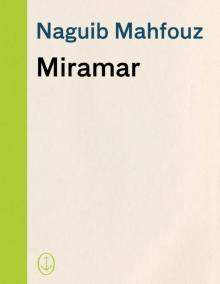 Miramar
Miramar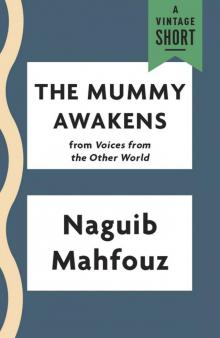 The Mummy Awakens
The Mummy Awakens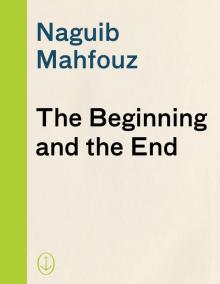 The Beginning and the End
The Beginning and the End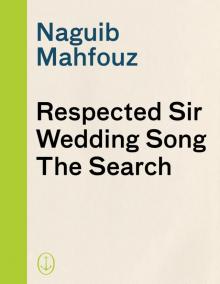 Respected Sir, Wedding Song, the Search
Respected Sir, Wedding Song, the Search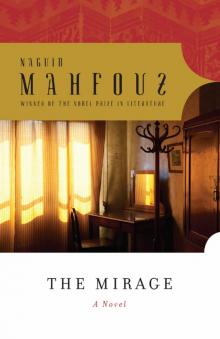 The Mirage
The Mirage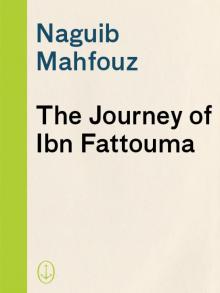 Novels by Naguib Mahfouz
Novels by Naguib Mahfouz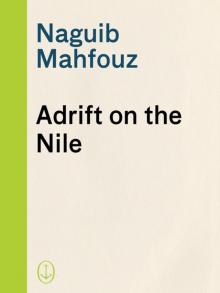 Adrift on the Nile
Adrift on the Nile Karnak Café
Karnak Café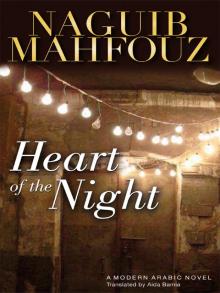 Heart of the Night
Heart of the Night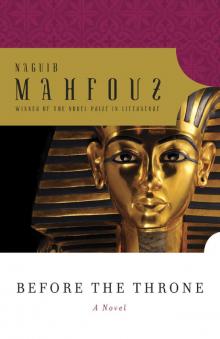 Before the Throne
Before the Throne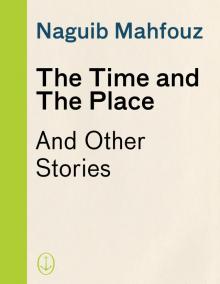 The Time and the Place: And Other Stories
The Time and the Place: And Other Stories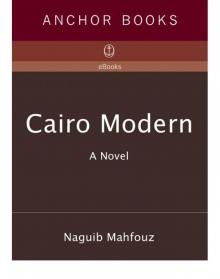 Cairo Modern
Cairo Modern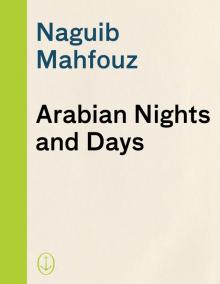 Arabian Nights and Days
Arabian Nights and Days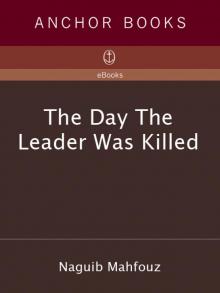 The Day the Leader Was Killed
The Day the Leader Was Killed Morning and Evening Talk
Morning and Evening Talk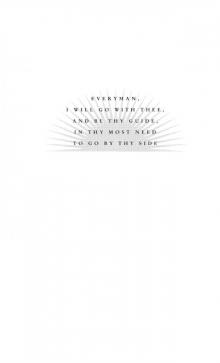 Three Novels of Ancient Egypt Khufu's Wisdom
Three Novels of Ancient Egypt Khufu's Wisdom Akhenaten: Dweller in Truth
Akhenaten: Dweller in Truth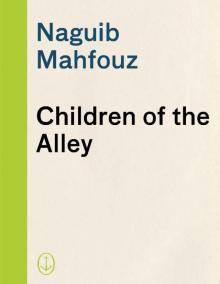 Children of the Alley
Children of the Alley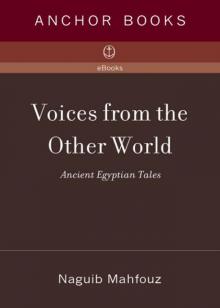 Voices From the Other World
Voices From the Other World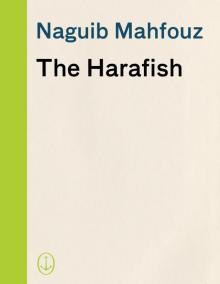 The Harafish
The Harafish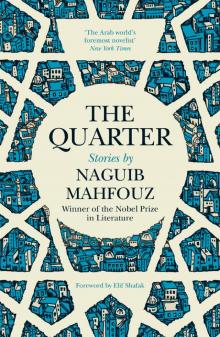 The Quarter
The Quarter The Seventh Heaven: Supernatural Tales
The Seventh Heaven: Supernatural Tales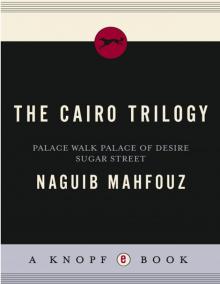 The Cairo Trilogy: Palace Walk, Palace of Desire, Sugar Street
The Cairo Trilogy: Palace Walk, Palace of Desire, Sugar Street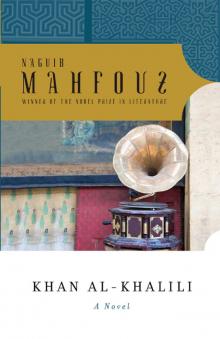 Khan Al-Khalili
Khan Al-Khalili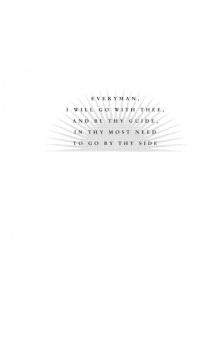 Three Novels of Ancient Egypt Khufu's Wisdom, Rhadopis of Nubia, Thebes at War
Three Novels of Ancient Egypt Khufu's Wisdom, Rhadopis of Nubia, Thebes at War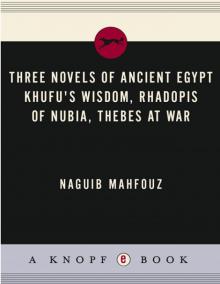 Three Novels of Ancient Egypt
Three Novels of Ancient Egypt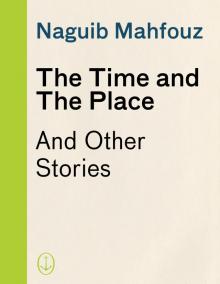 The Time and the Place
The Time and the Place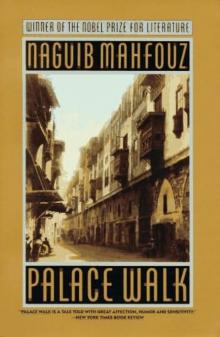 Palace Walk tct-1
Palace Walk tct-1 Akhenaten
Akhenaten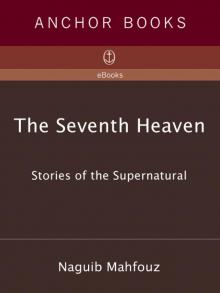 The Seventh Heaven
The Seventh Heaven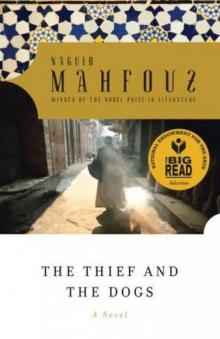 The Thief and the Dogs
The Thief and the Dogs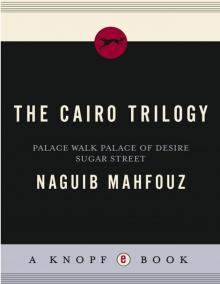 The Cairo Trilogy
The Cairo Trilogy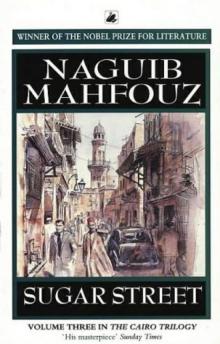 Sugar Street tct-3
Sugar Street tct-3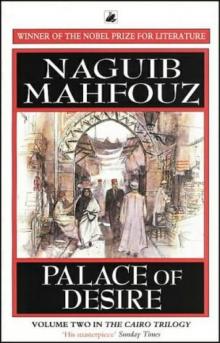 Palace of Desire tct-2
Palace of Desire tct-2 The Journey of Ibn Fattouma
The Journey of Ibn Fattouma